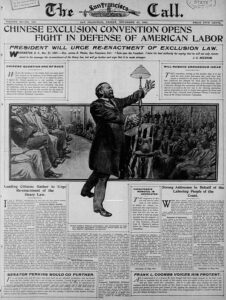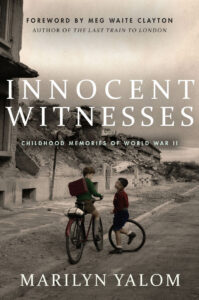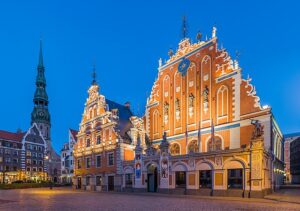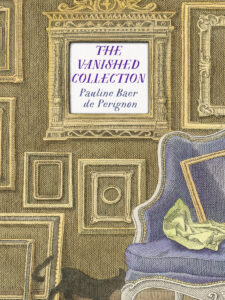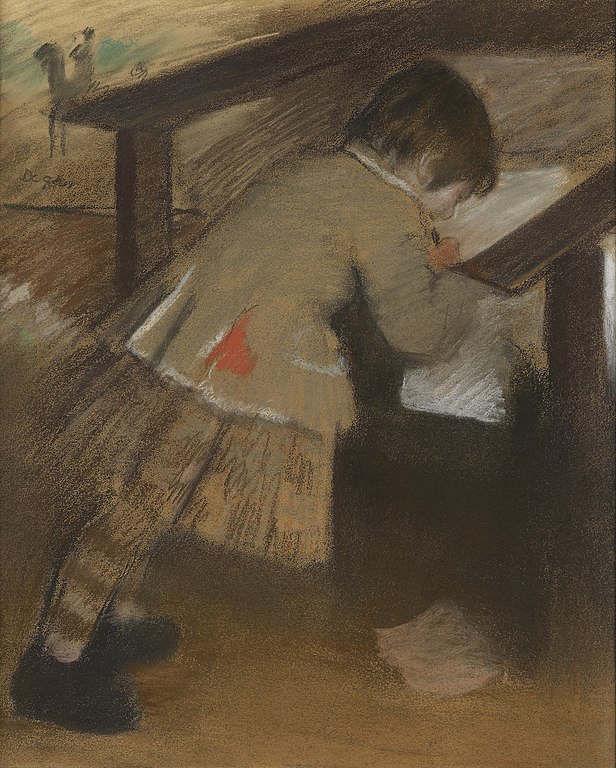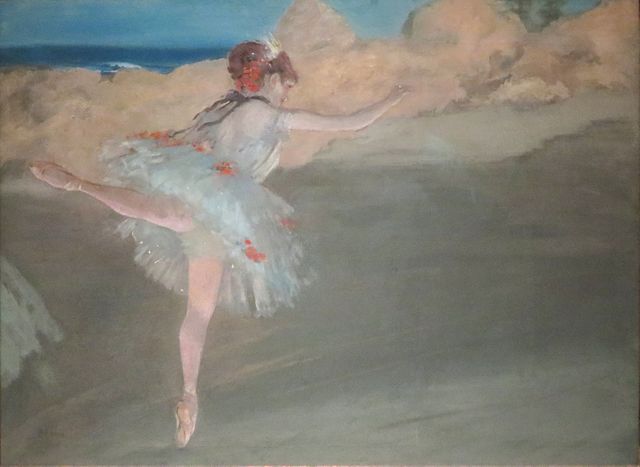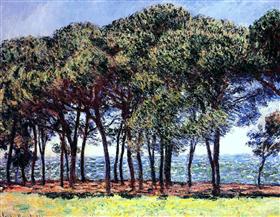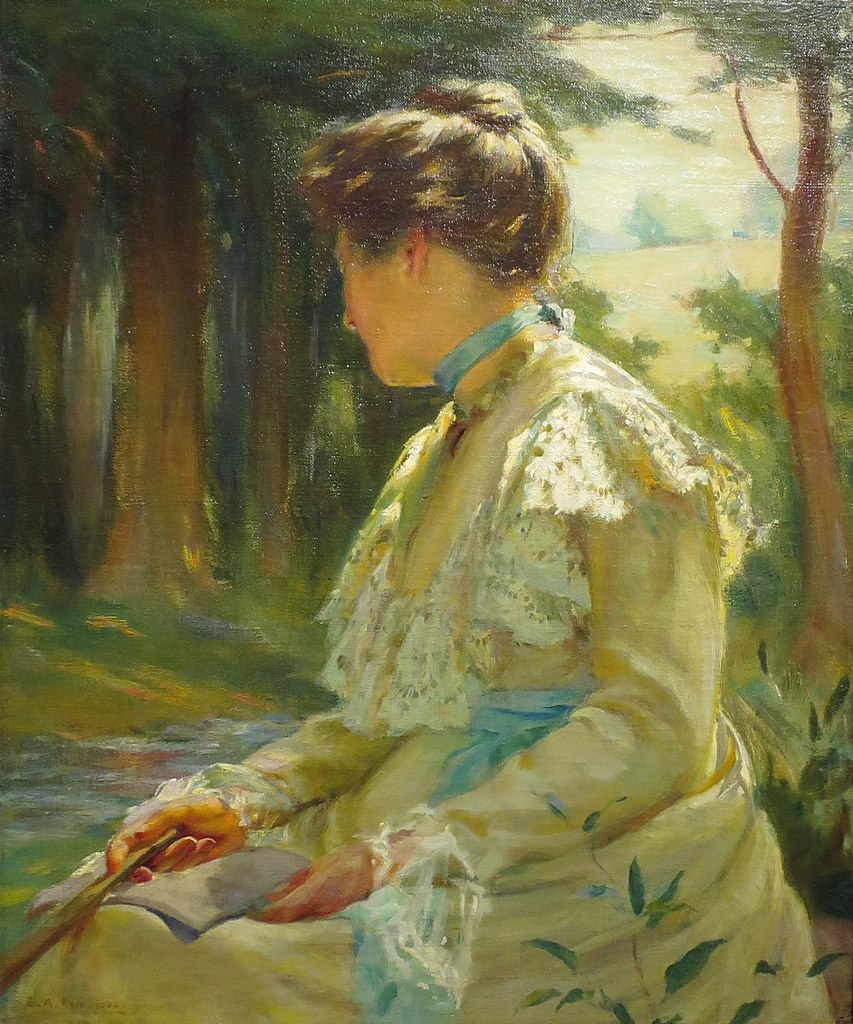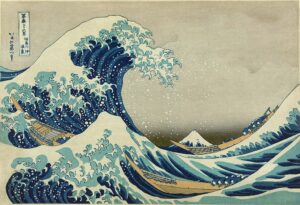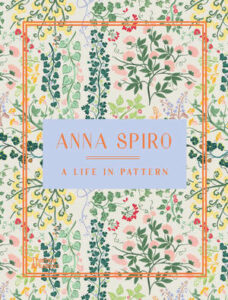
Magic, art, nostalgia, and inspiration from a hot Australian interior designer and decorator, with applications elsewhere in life (Brisbane, Queensland and Melbourne, Victoria, present-day): Like the wide-changing impact of the sixties counterculture movements, the pandemic is certain to usher in personal/social/worldly changes yet to come, but one consequence is already happening: a trend in the design and decoration of the interior spaces we’ve spent more time inside of than we ever could have imagined. It’s called the Grandmillenial style. In Australia, Anna Spiro is the “queen of this aesthetic.”
This unique coffee-table sized book covered in one of Spiro’s hand-printed fabric designs is what drew me to Anna Spiro: A Life in Pattern. A selection from Anna Spiro Textiles she founded in 2016 after founding Anna Spiro Designs. The pattern is from her Flower Collection – flowers and nature some of the Absolutely Beautiful Things she loves. The italics refer to the title of her 2014 book.
Spiro also loves colors, patterns, textures, shapes, surfaces, art, antiques, wallpapers, collectibles, and bright, bold contemporary designs, which she incorporates by “mismatching” and “layering” the old with the new, giving rooms a stunning freshness you’d never dream of pulling off. On walls, rugs, sofas, chairs, ottomans, tables, lampshades, bed coverings (like her Grandma Quilt collection), so many her own creations, brimming with gusto, warmth, life, joy.
The links below to both her design and textile websites show how she reinterprets a room, meshing with a client’s personality, preferences, atmosphere desired. Nothing is generic. Everything surprises. See: https://www.annaspirodesign.com.au/projects/, https://www.annaspirotextiles.com.au/textile-library-page, https://www.annaspirotextiles.com.au/copy-of-textile-library-page.
Closer to home, the Today Show explains the Grandmillenial style in the video below as “yin and yang,” a Chinese philosophy of bringing harmony to your life by combining the “contradictory elements” Spiro spells out in clear, crisp, lively prose befitting her design style:
Anna Spiro could have easily invented the term and style, but an editor at House Beautiful magazine beat her too to it. See: https://www.architecturaldigest.com/story/three-formerly-unpopular-decor-styles-are-merging-into-one-big-design-trend.
At first glance, you may think this dazzling compilation of 250 illustrations – mostly sharp photographs taken at unusual angles displayed on colorful pages often with geometric designs, and sketches on unusual page surfaces by two members of Spiro’s enthusiastic team – is meant to flip through. The intention, though, is to make you stay on a page long enough to reflect on what she’d done and how you could refresh spaces you’ve become tired of and/or up for trying something new.
Described as a “monograph,” A Life in Pattern comprehensively lays out how an original artistic mind thinks, creates, and works. It’s her portfolio, her calling card. A jaw-dropping show of a personalized style and approach for bringing comfort and happiness into our daily living. A visual, emotional, and literary expression of nostalgia for the days when we were young and life seemed happier, simpler when we were in our grandmother’s house, if lucky enough to have that kind of gentle, unconditional love.
The visual and literary messages also represent a philosophy of life. Don’t be afraid to be bold and different. Be your own person and be confident about who you are and who you choose to be. Pay attention to the details, to the things that are meaningful and make you happy. Carefully plan so what you create is not a hodgepodge or sends you adrift. The prose equally carefully thought out to illuminate but not overwhelm.
Spiro advises finding something that ties a room together. Color is how she does it. It extends to fashion, she says. Being a fashion designer was what she thought she’d become. She carries that with her in her clothes that make a statement as to her distinctive, eclectic tastes, so you’ll see photographs of her in arty, bohemian, chic wardrobe combinations. She’s someone to admire for embracing who she is.
Blue in every shade imaginable is the color Spiro chooses to harmonize interiors because blue reminds her of the sea. Australia is a country and a continent surrounded by 22,826 miles of coastline and 10,000 beaches. Hawaii has also inspired the blue theme, as seen in geometric patterns in her first commercial project that put her on the global map: The Halcyon House, a boutique hotel in New South Wales on Cabarita Beach.
All her designs are in gorgeous colors. A palette of greens evoking Australia’s amazing, abundant, and diverse species of vegetation and trees. Corals evoking the Great Barrier Reef. Yellows, the glorious sunlight. A rainbow of colors on every page and rooms, which makes the book fun, pleasurable, and playful.
To get to know how Spiro weaves her magic for a client, I suggest a fictional one, Nora Porteous – the protagonist of a beloved 1978 Australian novel by Jessica Anderson, Tirra Lirra by the River. It won Australia’s highest literary honor, the Miles Franklin Award. Kudos to the sixty-year-old Brisbane Writers Festival for commissioning Spiro in 2019 to create Nora’s room, combining literature and design as a springboard for creating atmospheric settings, fictional and real.

I was thrilled to have found a used copy of the 1978 book, badly yellowed, paper-thin, but for once I didn’t care about condition, only gaining insight into how Spiro perceived seventy-seven-year-old Nora. (A recent copy in the image on the right.) Her story is that she travels 600 miles by train to come back to her native childhood home in Brisbane she hasn’t seen since she was ten and never expected to. She’s not physically well but her mind is expansive. Like her refined prose, she’s an ideal client for Spiro having waited most of her life for a place of her own she feels she belongs. She too is artistic, loves colors, flowers, the ocean, and made things like lampshades and “embroidered cushion covers.” Her favorite colors are “magenta blue” and “magnetic gold.” Divorced at thirty from a miserly, selfish man, she sought female friendships. The reader understands that her best medicine would be a room she’ll feel comfortable, content, and at home in. Thanks to a Festival assistant, you can see Nora’s Corner (images courtesy of Brisbane Writers Festival):




Feel the excitement and relaxation Nora’s Corner generated: https://www.facebook.com/becmactv/videos/2364262490288290/.
Another project in the book is one of her own. A “cottage” with two hexagonal shaped connecting structures on Stradbroke Island in Brisbane. “Toned down” to blend with the beachy vibe. You can see these rooms on The Design Files, a popular Australian site featuring creative and inspiring people and places: https://thedesignfiles.net/2022/01/homes-anna-spiro-north-stradbroke-island-minjerribah/.
Turning the thick, glossy pages in wild and soothing colors (like sea mist), designs, patterns, and surfaces (like cane, rattan, sisal), you won’t even need Spiro to tell you she doesn’t do “boring.”
“All modern interior design books owe their existence to a pioneering guide that was all the rage in 1897,” says Mitchell Owens writing on The Legacy of Edith Wharton’s “The Decoration of Houses”. Who knew the “first woman to win the Nobel Prize” (in 1920 for The Age of Innocence) would be the one to argue for interior design and decorating to be a “branch of architecture”? More than a century later, Spiro proves Wharton right.
In a twist on Virginia Woolf’s A Room of Your Own, Anna Spiro asks us how to make your home your own? What “treasured objects” would you miss like “old friends?” What inspiration can you derive from an open-minded, eclectic, life-affirming approach towards inner spaces for other aspects of your life?
Lorraine

